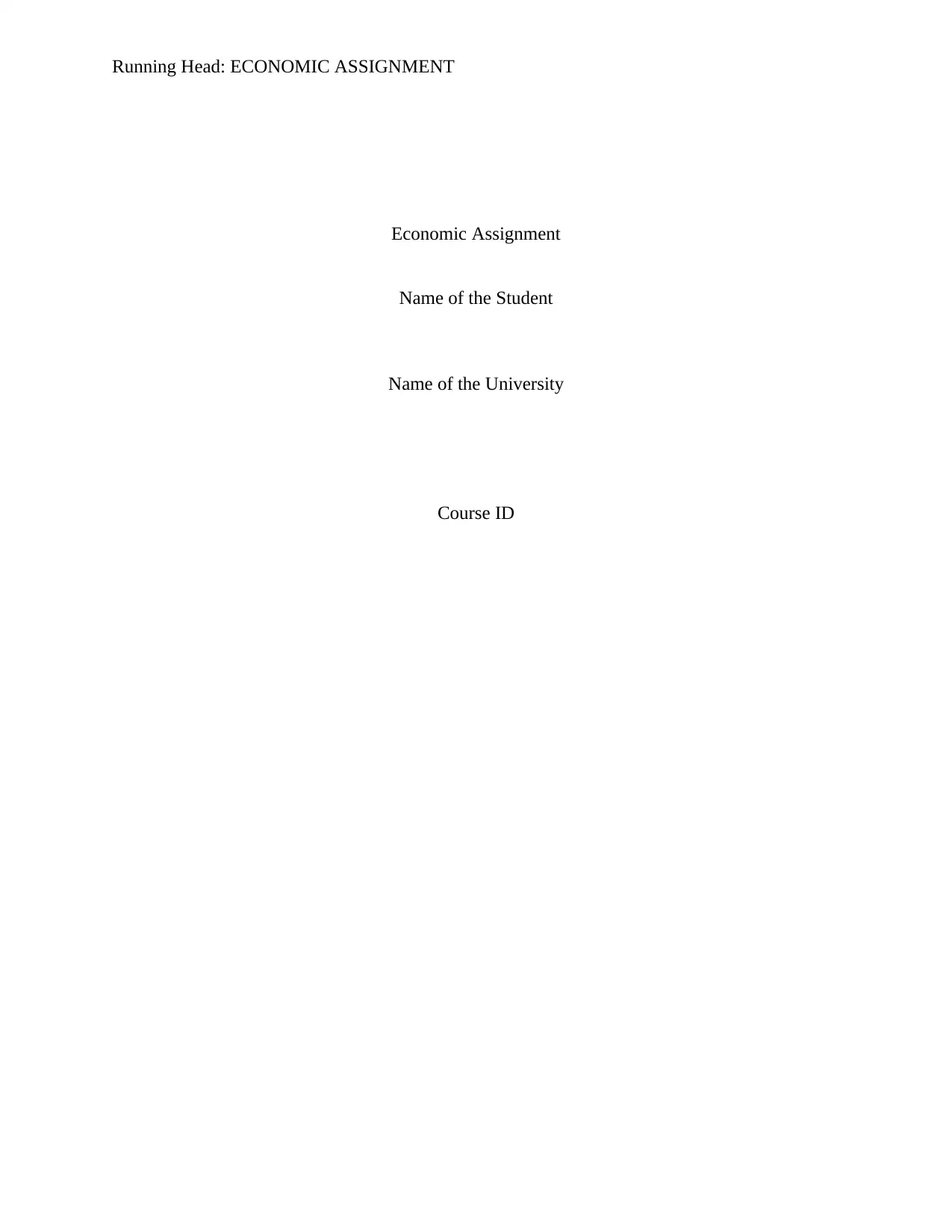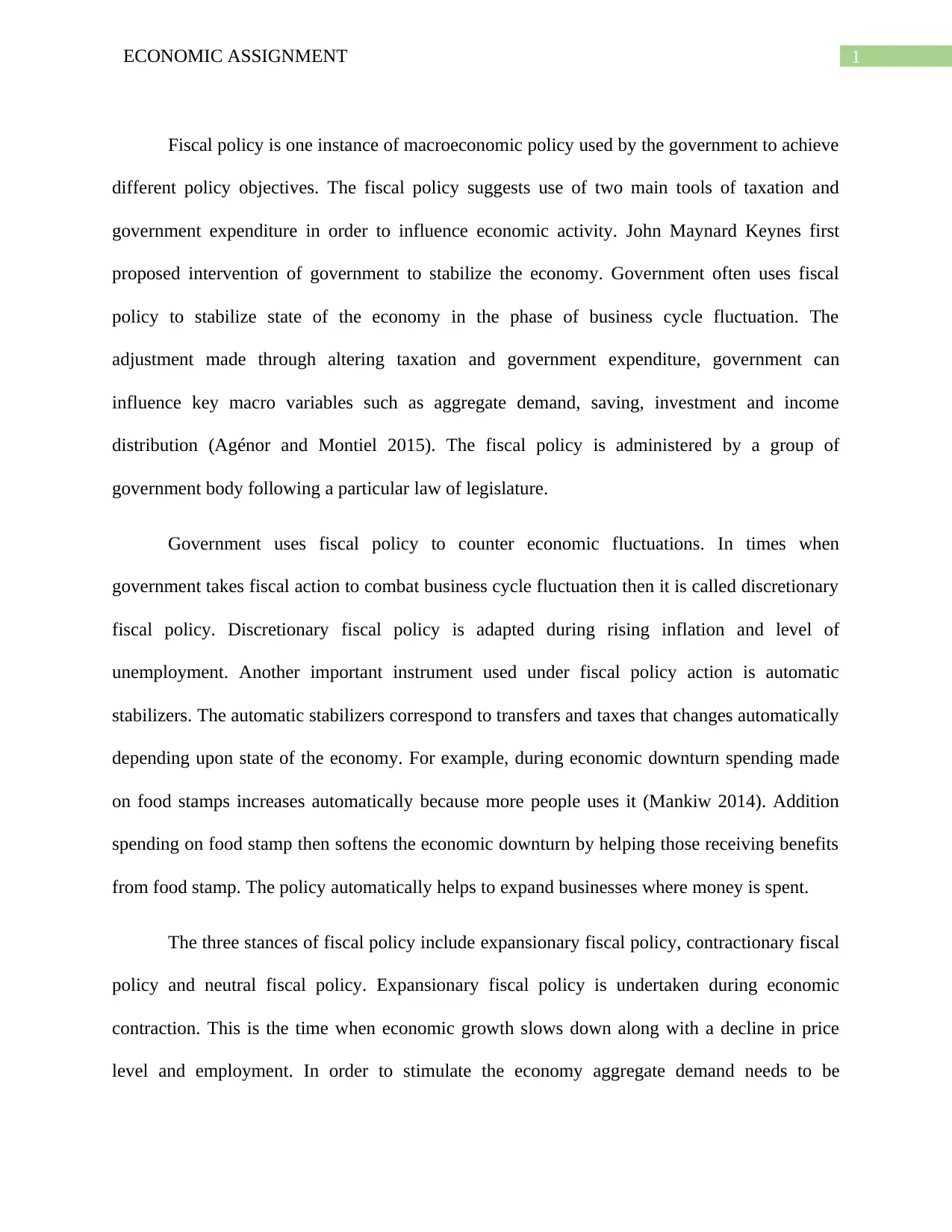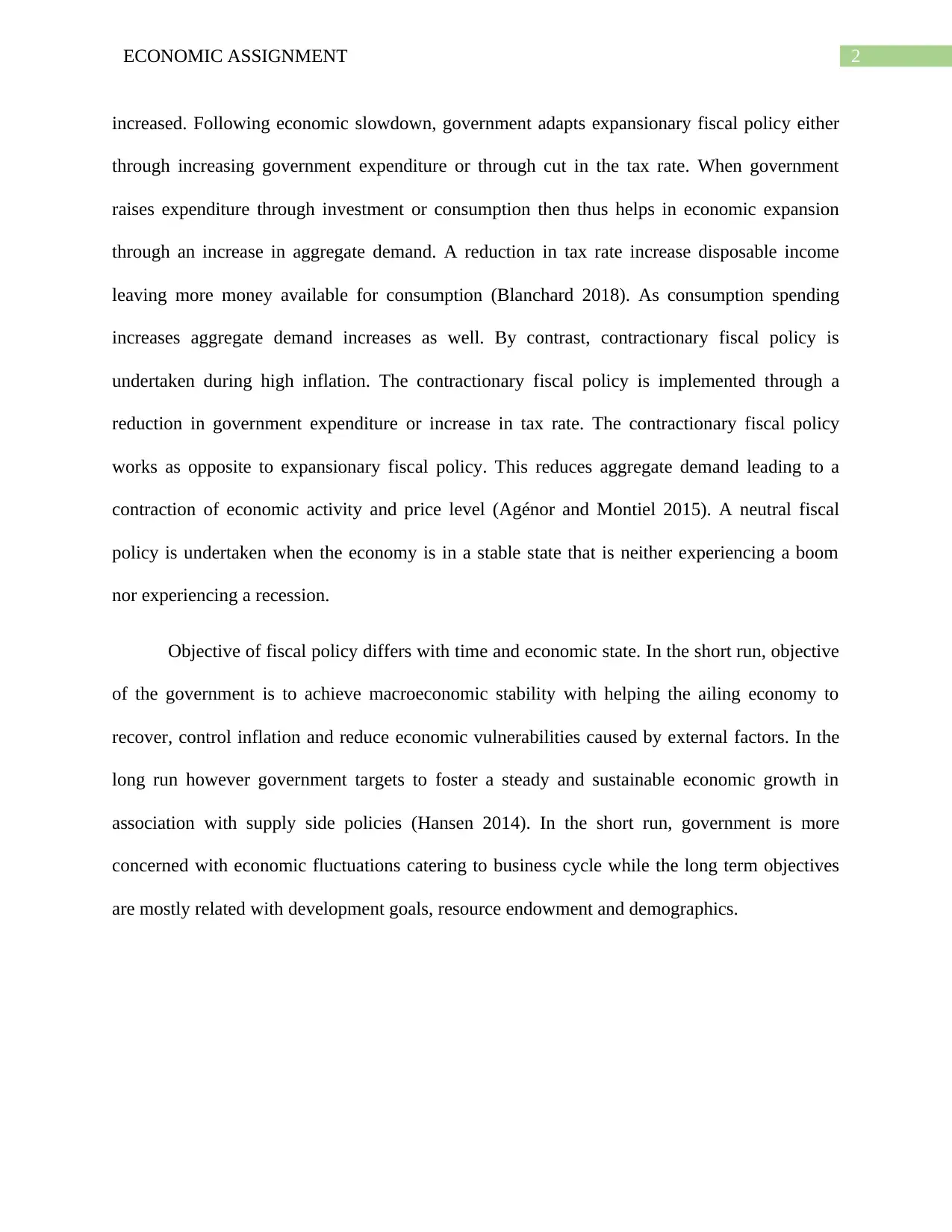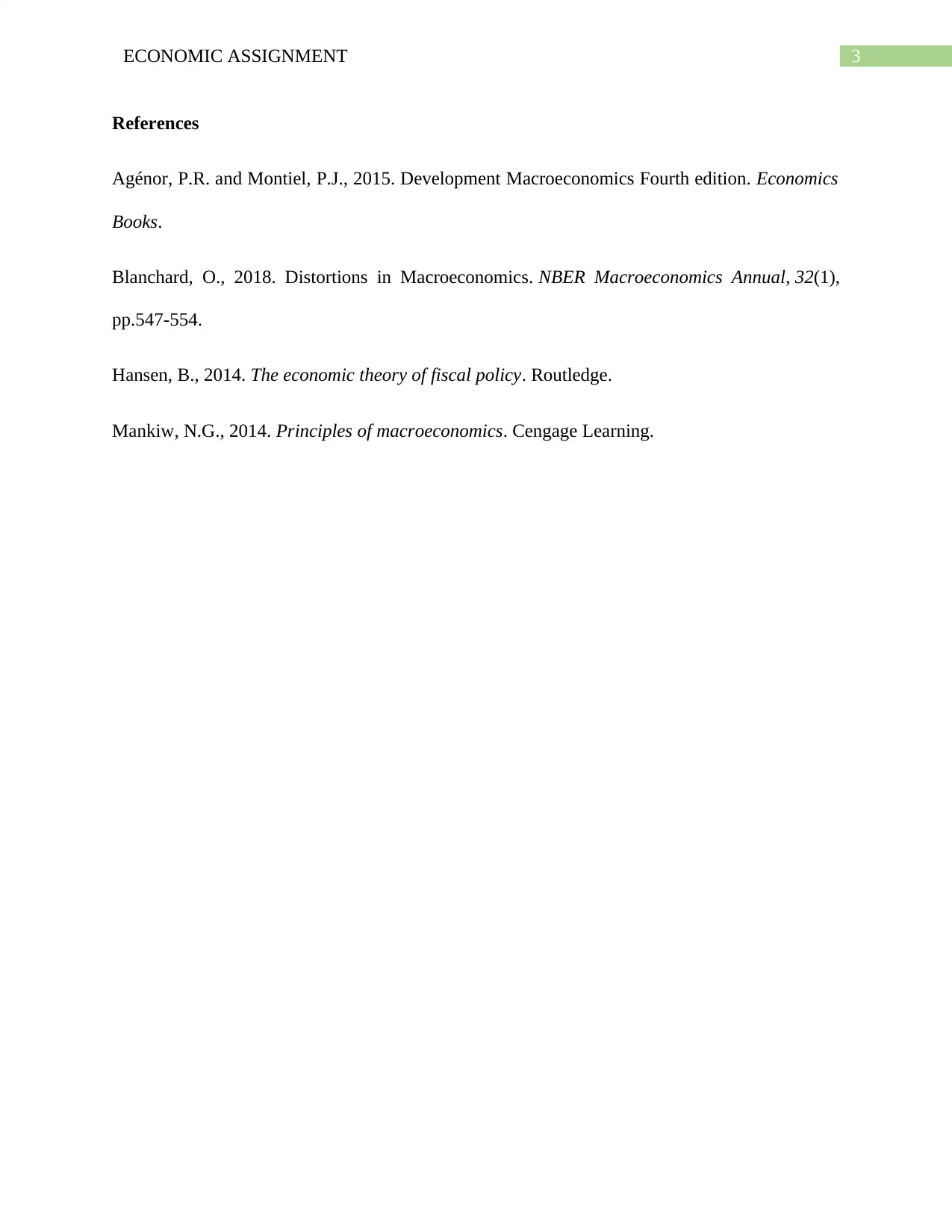Exploring Fiscal Policy: Impact on Aggregate Demand and Growth
VerifiedAdded on 2023/06/11
|4
|667
|264
Essay
AI Summary
This essay provides a comprehensive overview of fiscal policy, a macroeconomic tool used by governments to achieve various economic objectives. It begins by introducing the concept of fiscal policy, highlighting its two main instruments: taxation and government expenditure. The essay discusses the historical context, referencing John Maynard Keynes's advocacy for government intervention to stabilize the economy. It elaborates on discretionary fiscal policy and automatic stabilizers, explaining how these mechanisms function during economic fluctuations. Furthermore, the essay outlines the three stances of fiscal policy: expansionary, contractionary, and neutral, detailing the conditions under which each is employed and their respective impacts on aggregate demand and economic activity. Finally, it differentiates between the short-run and long-run objectives of fiscal policy, emphasizing the focus on macroeconomic stability in the short term and sustainable economic growth in the long term. Desklib offers a variety of solved assignments and study tools to aid students in understanding complex economic concepts.
1 out of 4











![[object Object]](/_next/static/media/star-bottom.7253800d.svg)